I keep a strong interest for fluid simulation (specifically water simulation) and this is my first implementation for SPH (Smoothed Particle Hydrodynamics).
This post is the first part of the whole application – SPH framework.
1) Rigid Body model
Rigid body model indicates that all particles, scene walls and barriers are not elastic – it will repel other rigid objects away when they hit it. Navier-Stokes equation will be directly applied on rigid particles, just like the real world situation : molecules cannot converge.
Collisions with walls/barriers
There are no repulsion forces. Only velocity is ‘reflected’ by the hit point normal, as light ray reflection. This works well.
Collisions with other particles
The physical model among particles is from GPU Gem 3 Chapter 29:
http://http.developer.nvidia.com/GPUGems3/gpugems3_ch29.html
But how to get a proper spring coefficients and damping coefficients is not easy, and inappropriate configuration could make your particles crazy or sluggish.
(Rookie Hint - [Collision Detection] : |currPos – wall| < epsilon is not the correct solution that suffers from precision problem in ANY case bcz. you can never predict particle velocities. The right solution is to judge whether the predicted position in next frame is beyond the wall or not)
2) Navier-Stokes model
The basic idea is still from [Muller 2003] as mentioned before. Interestingly this paper doesn’t mention SPH is based on rigid particles and this may bring confusions to SPH beginners as me.
I refered to the following link for the maths part.
http://www.rchoetzlein.com/eng/graphics/fluids.htm
3) Grid Acceleration
I split the whole scene space by about 10*10*10 grid cells, and only particles in neighboring grid cells (27 cells) are considered when calculating pressure/viscosity kernels. This improves the performance by about 100% when particles number is about 700 on CPU.
[Screenshots]
Let me show you a sequence of screenshots here:
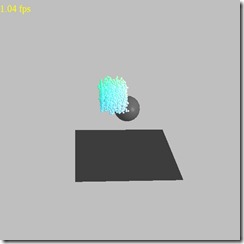


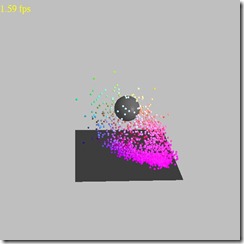
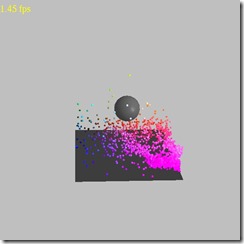
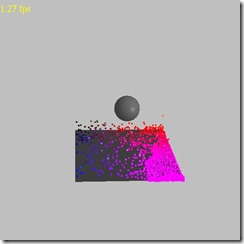
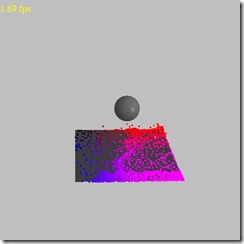
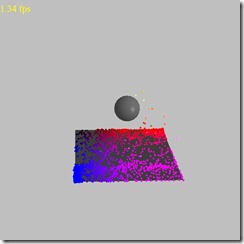
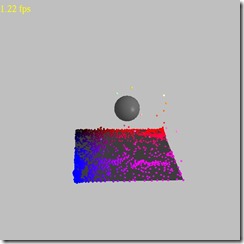
You can see the splashing when particles hit the ball barrier and they are ‘flowing’ on the ground – see the small waves! I think it will look much better when we have more particles like 50000.
There are total 1600 particles with FPS averaged at about 1.3 fps – I haven’t done ANY code optimizations yet.
Yes the following work is:
- Fluid surface reconstruction (it is even harder man…)
- GPU acceleration
Just wait for me…






















 2811
2811

 被折叠的 条评论
为什么被折叠?
被折叠的 条评论
为什么被折叠?








